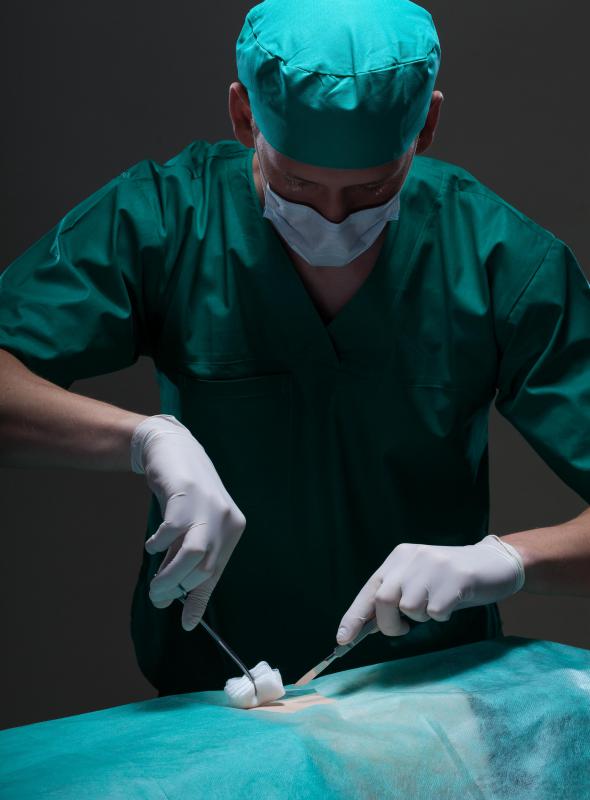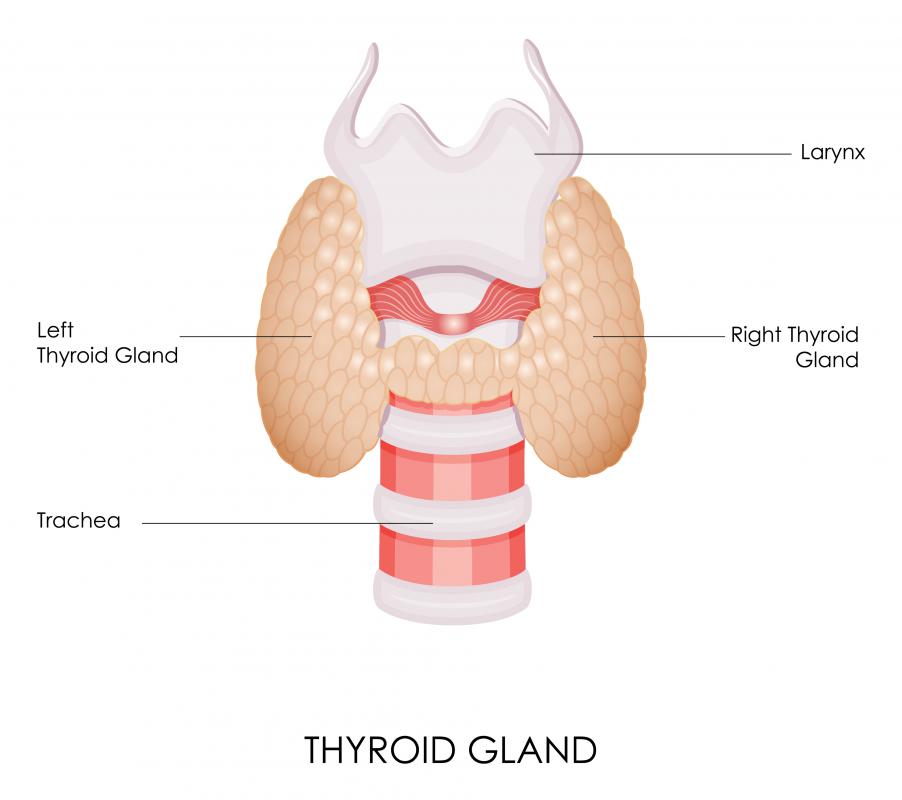At TheHealthBoard, we're committed to delivering accurate, trustworthy information. Our expert-authored content is rigorously fact-checked and sourced from credible authorities. Discover how we uphold the highest standards in providing you with reliable knowledge.
What is a Pericardial Window?
A pericardial window is a cardiac surgical procedure that creates an opening in the pericardium, the membrane sac that encloses the heart. The opening provided can relieve the pressure from fluid that has collected around the heart, called pericardial effusion. It is also possible for the surgeon to view possible biopsy sites through the pericardial window.
Before the window is created, the patient will be put under anesthesia. The usual placement of the window is below the sternum or through the ribs on the left side of the body. The surgeon will make a small incision into the pericardium, allowing the excess fluid to be released into the abdomen. The fluid is later absorbed into the abdominal tissue harmlessly.

Most people who have a pericardial window procedure are able to return home within two days. The operation is usually successful at safely relieving the pressure from the fluid built up around the heart. Most patients report an improvement in their symptoms without a need for further surgery.
Pericardial effusion causes shortness of breath and painful breathing. Some people report a persistent cough and an inability to breathe comfortably lying down. Fainting, dizziness, and a rapid heartbeat are common among people with pericardial effusion. Untreated, this condition can lead to heart failure and death.

The pericardial cavity can fill with fluid for a variety of reasons. Some viral infections can cause a fluid buildup around the heart. People with cancer have been reported to have pericardial effusion during the treatment process. Heart failure can cause fluid to collect in the pericardial sac, and it is not uncommon to have fluid around the heart after cardiac surgery. Renal failure can cause edema in the tissues of the body, including the space around the heart.

Other causes that can precipitate a need for a pericardial window are many. Autoimmune diseases, such as lupus can cause fluid to collect in the pericardium. Some bacterial and fungal infections cause inflammation of the pericardium, which triggers the fluid buildup around the heart. Hypothyroidism and the human immunodeficiency virus (HIV) and acquired immunodeficiency syndrome (AIDS) may cause the symptoms of pericardial effusion as well. A traumatic injury to the chest or heart can also cause the condition to develop.

Some medications can cause the pericardial effusion that prompts the surgical formation of a pericardial window. Hydralazine, phenytoin, and isoniazid are some of the medicines that can cause fluid buildup around the heart. Chemotherapy drugs may have pericardial effusion as a side effect of treatment as well.
AS FEATURED ON:
AS FEATURED ON:















Discussion Comments
I had a pericardial window done two months ago today and the fluid has returned in less than two weeks following the procedure. Where did the fluid come from?
My father went through this when he had heart surgery. Something I didn't know beforehand was there is always a post-surgery risk that the tubes leading from the heart can get clogged. If they do, it's easy for what they call a cardiac tamponade to happen, which is when enough blood enters the pericardial sac for it to give the heart trouble.
Luckily, they were monitoring him carefully and they caught it in time, but apparently there have been cases where someone has come through surgery only to die from the tubes getting clogged, which must be devastating for their family.
@Fa5t3r - The problem is that if you're out of a hospital it's very unlikely that someone would really be able to diagnose pericardial effusion, since many of the symptoms fit other problems and you really don't want to get this kind of thing wrong.
And I don't think it's even called a pericardial window if they aren't actually cutting a window into the sac. If they are just inserting a needle, I believe it's called pericardiocetesis. They do this sometimes when there has been an accident and it's obvious what needs to be done and there are paramedics on hand who know how to do it, but generally, it's just safer to get the person to a hospital and get it done properly.
Anyway, usually they just tell them to stick a tube (like from a pen) in between the patient's ribs after making a small cut there, so the fluid can drain out.
I actually wonder if someone had to do this in real life, what the survival rate would really be. I mean, it's basically the next thing to heart surgery done without any kind of anesthetic or antiseptics.
Post your comments